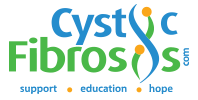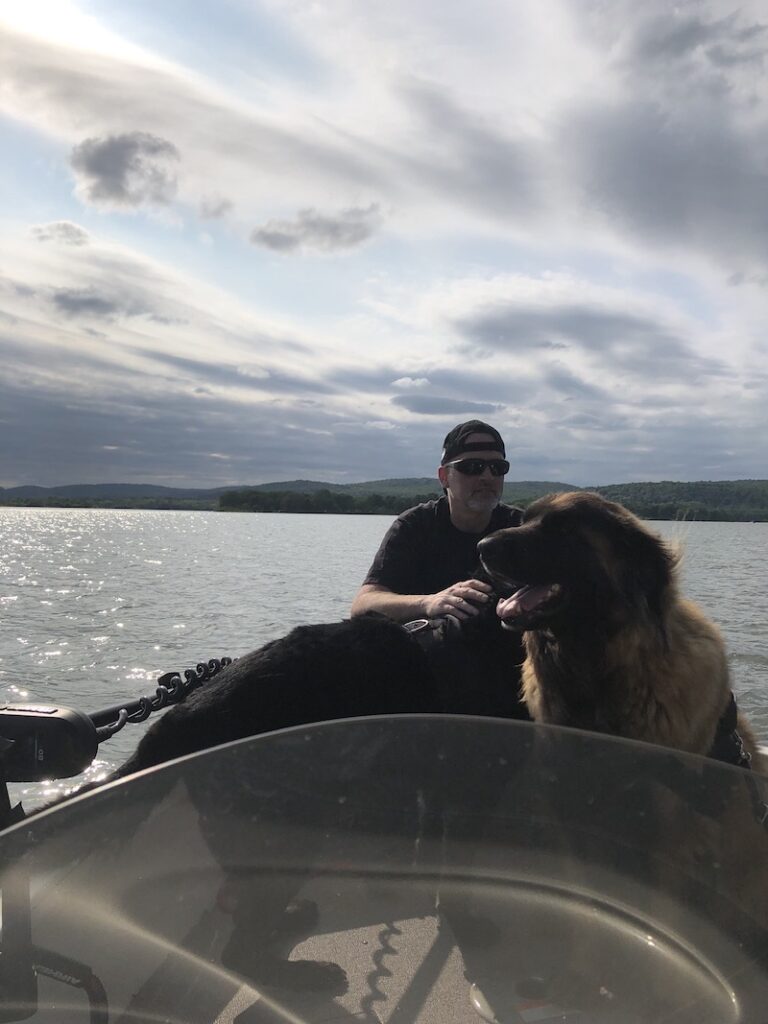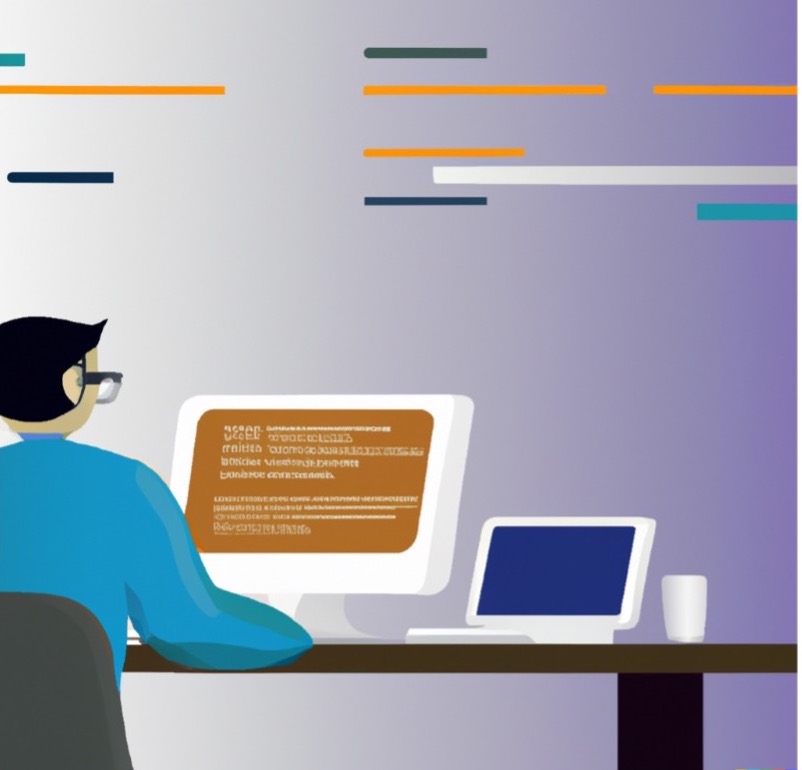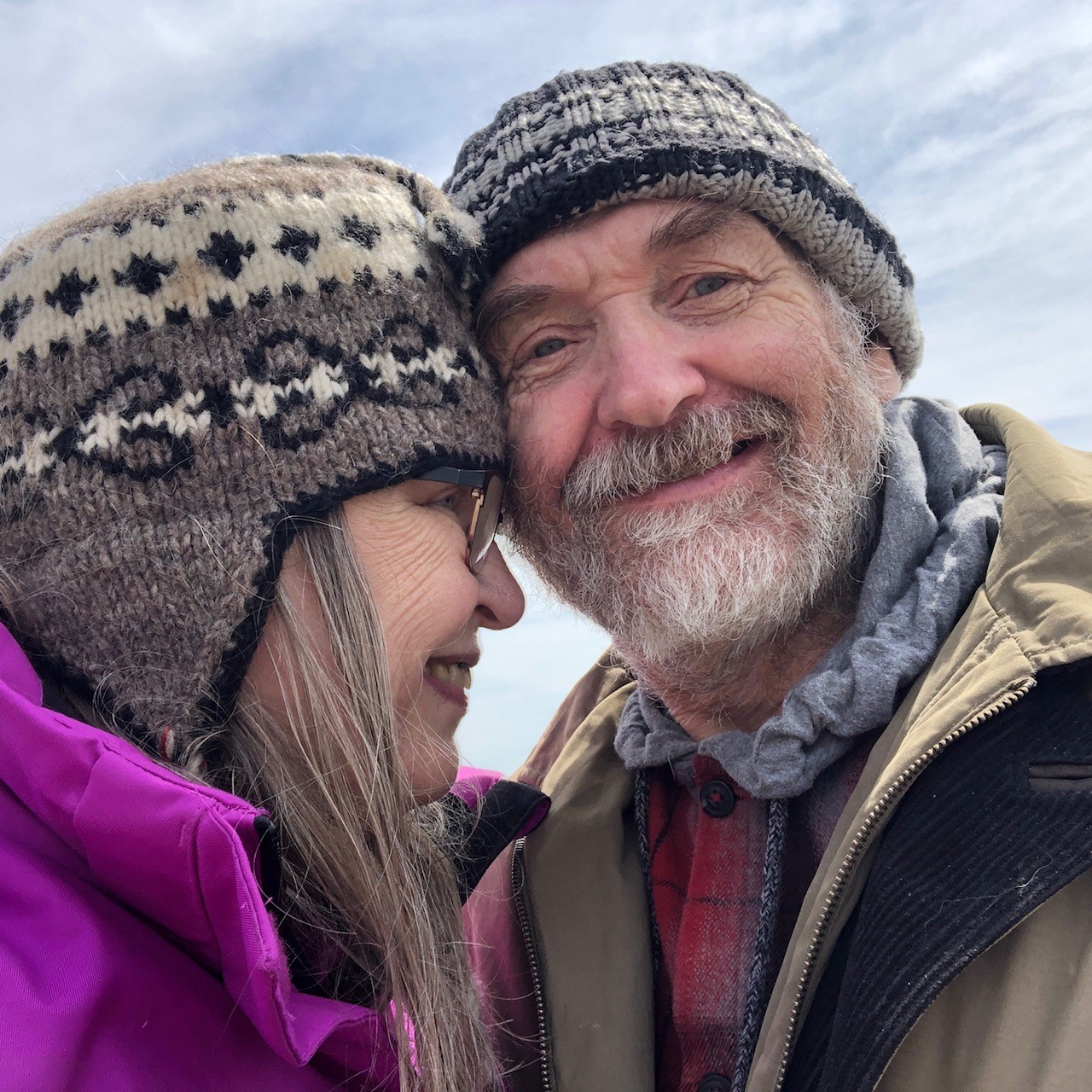Trikafta, The Equalizer – by Ron Bartell
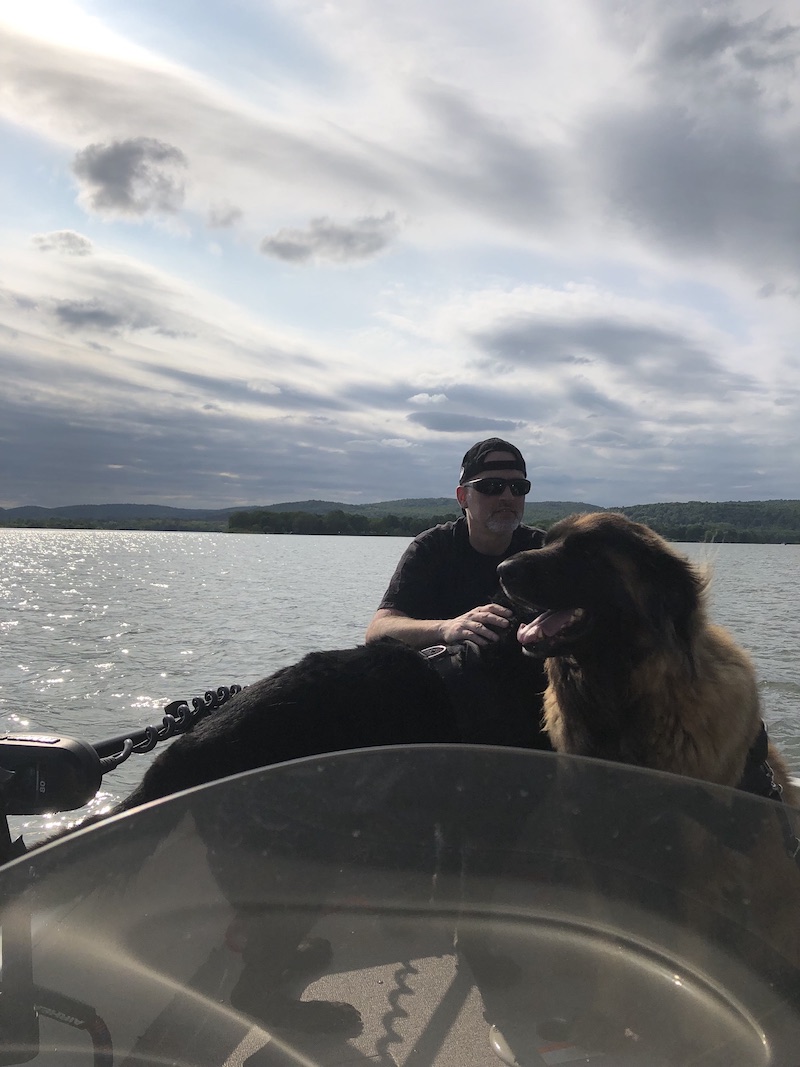
The Beginning
My name is Ron, I am 48 years old, and I was diagnosed at birth with cystic fibrosis. I was born roughly one month premature and given up for adoption at birth. As a result of my adoption being finalized in New Jersey in 1977, the records were sealed, therefore, I do not have much of a medical history on my biological family. The only history I am aware of is that my biological father died of an unknown abdominal condition shorty after my birth at twenty-four years of age. A copy of the death certificate was required to finalize the adoption, but the handwritten cause of death is illegible.
For the most part, my childhood was normal. I thrived, acted like a normal kid and didn’t exhibit the normal respiratory signs of having cystic fibrosis. I was always thin, I always had issues gaining weight and visited the restroom soon after eating. However, my FEV-1 results were generally over one hundred percent of the predicted value. Because my respiratory function appeared normal, there was speculation whether I had Cystic Fibrosis. I had five sweat tests administered during various years from the time of my adoption to starting high school; All were indicative of having cystic fibrosis. I was DNA tested as a teenager which put to rest the speculation of having cystic fibrosis. As a teenager, I ran track and cross county in high school. I was a lifeguard at the community pool and swam like a fish. I volunteered on a local first aid squad ambulance and obtained a certification as an emergency medical technician. I was fortunate that my cystic fibrosis was mild enough to allow me to live a fairly normal life. A huge part of my success was due to the diligence of my mother.
Childhood CF Treatment and Medications
My childhood predates “The Vest” or any similar machine designed to perform automated chest percussion therapy. My vest was my mother’s arms and cupped hands performing manual clapping on my chest, sides and back, for thirty minutes sessions, twice a day. That was a serious workout. My mom was dedicated and never missed a session. I was thirteen when I received a machine called the “Percussor.” It was a black handheld device that resembled an hourglass with a metal rod and rubber cone sticking out of the bottom. Plug it in, turn it on, and the cone would go up and down at various speeds and intensity that you set it at. It replaced my mom’s arms and hands for the most part. While convenient, she did a better job, but it allowed me to do my chest percussion by myself. My senior year of high school, I received the original “VEST”. The original Vest was a sizeable metal cabinet that was not travel friendly, so the Percussor still had a role to play. I had that Vest for approximately 10 years before I was able to trade it in for an updated and much smaller model.
Aside from the chest physical therapy, my medicine as a child, consisted of digestive enzyme replacements, and vitamins. I started on Viacase and was restricted to a nonfat diet. Viacase could not handle much. If I had a little fat, I risked being doubled over in pain with abdominal pain. It was primitive at best compared to what exists today. I was put on Pancrease when it came out and progressed through the increased strengths as they came to market. I was on Pancrease until my early twenties and then it just stopped working for me. I would be doubled over with abdominal pain after eating. I was then put on Creon and have been on various strengths ever since. The first “breakthrough” Cystic Fibrosis medication that I was put on was Pulmozyme and that was around 1990. I have been on it since. I think it helps thin out the mucus a little. But for me it wasn’t the game changer it may have been for others at the time. Unrelated to Pulmozyme, the first new complication I developed from Cystic Fibrosis also presented itself in 1990: Chronic sinusitis. I was getting massive sinus headaches and ended up having my first sinus surgery the same year. I have had five sinus surgeries in total with the last being in 2019, the average being a surgery every seven years.
As far as having lung infections as a child, I had several and they were all cleared up with oral antibiotics.
Adulthood Education and Career
I moved out on my own when I was 19 years old. The diligence of caring for my cystic fibrosis moved out also. I ended up in the hospital for the first time in my life just shy of my twentieth birthday. Two weeks of IV antibiotics, one done in the hospital and the second done at home. The experience proved chest percussion has a purpose. However, unlike forgetting or failing to take digestive enzymes, the consequences are not immediate. That was a wake-up call but not my last time on IV antibiotics. I would need to be on IVs an average of once every two years. Fast forward a few years: I was working full time shift work, twelve-hour night shifts doing EMS in a major New Jersey city and going to college full time in New York City during the day. There were not enough hours in a day and the need for sleep was outweighed the perceived need for daily Vest time. On winter break, and on a couple of summer breaks, I’d do two weeks of IV antibiotics to correct the neglect done. I graduated with a bachelor’s in criminal justice and a master’s in public administration. I am not advocating neglecting treatment, but its what I did to obtain my goal.
I had always wanted a career in law enforcement. I would always do well on tests and physical agility tests. Once I got to the medical examination, every doctor excused themselves upon seeing “Cystic Fibrosis” and left the room for a few minutes. I presumed they were going to look it up in their medical texts from when they were in medical school because when they returned, they looked at me either like I should be dead or would probably be dead soon due to having cystic fibrosis. Complicating this was a cystic fibrosis related diabetes diagnosis in 2004. That ended my hiring process for a federal law enforcement agency.
In 2005 I got my break. I was hired by a county law enforcement agency and graduated number one in my police academy class. Three years later I transferred to a municipal law enforcement agency due to a better schedule, pay scale and job description. Two years later I was selected for the department’s canine unit. Canine school is six months of physical activity with a German Shepherd, and I became certified as a patrol and narcotic detection canine handler. I was partnered with my dog for seven years until he was retired. I made sergeant the last year I worked canine. I was promoted to lieutenant two and a half years later and currently hold that rank.
Orkambi, Symdeko and Trikafta
I was selected for the second clinical trial of Orkambi just shy of my thirty-eighth birthday. I was excited to be part of something that looked very promising in the advancement in treating cystic fibrosis. One of the first visits entailed a two-day visit. Since I lived more than 45 miles from the site located at the Jersey shore, I was put up in a hotel right on the ocean. Not a bad perk. The visits were less pleasant. There was a new blood draw every so many minutes and it had to be a new stick each time. That was the downside of the trial. After that it wasn’t bad. Beginning and end draws at every visit and take the medicine/placebo as directed. At the conclusion of the trial, I was put on Orkambi. It took a while to find out what I had been taking during the trial. I had the placebo. I was on Orkambi until Symdeko was approved. I was on Symdeko until Trikafta was approved and I am currently taking it.
I cannot say I experienced an overnight change. I have noticed, since being on the medication long term, it has increased and stabilized my FEV-1 values. I have not needed IV antibiotics for a lung infection in over ten years. Infections that were treated with oral antibiotics have been few and far between. My sinusitis seems to be more controlled and less problematic. I rarely get severe sinus headaches and when I do they seem to coincide with my seasonal allergies. My digestive issues have diminished. I can eat and don’t have to plan an emergency route to the nearest restroom. I have put on and am maintaining weight. I’m seventy-four inches tall and now weigh two hundred pounds. For reference, I weighed one hundred forty pounds when I graduated the police academy. While getting older and a slower metabolism might have contributed as well, I am confident that the Trikafta is largely responsible. All in all, Trikafta has leveled the playing field for me. I never had a horrible quality of life due to cystic fibrosis, but now it has improved aspects of my condition that make me feel a little more normal outside the privacy of my own home. For me, the improved digestive issues are the greatest improvement in my quality of life.
Side Effects and Other Heath Issues:
While Trikafta and its predecessors have improved my quality of life significantly, I have had one side effect linked to the medication and two health conditions that have occurred since being on the medications. The heath conditions I have developed are not directly linked to the Trikafta or its predecessors at this time, nor are they suspected to be caused by the medications.
The one side effect that is attributed to the Trikafta is elevated liver function tests. I previously have had normal liver function tests. Since being on Trikafta, my LFTs are routinely elevated and are continuously monitored. The only other mediation that has raised my LFTs, and much higher than that of Trikafta, is the oral antibiotic Zyvox. My LFTs have not reached the point where discontinuing or modifying the dose of Trikafta would be considered.
Since being on Orkambi, Symdeko and Trikafta, I have had two new medical diagnoses. Again, these conditions have not been linked to, nor suspected to be caused by Trikafta or its predecessors. The first condition is a reoccurring intestinal obstruction. I have had five, all requiring hospitalizations. They all start the same way. I wake up around 2 am and have a bowel movement. The bowel movement abruptly stops, and I feel like I still must go, but I am unable to. I then began to bloat, belch frequently and then the pain increases to the point where I am doubled over. Each time, CT scans in the emergency room have shown a complete intestinal obstruction in the same location. Treatment involves the insertion of a NG tube, fluid bolus and pain medication until the obstruction clears. It generally takes two to three days before the bowels start moving again. It is slow at first and takes another few days to completely clear. The last obstruction occurred in January of this year. I still do not have a medical explanation on the cause of the obstructions.
The second medical condition was a colon/rectal cancer diagnosis. This was found following the onset of the intestinal obstructions. I was sent for a colonoscopy and endoscopy to see if anything could be contributed to the obstructions. The colonoscopy revealed polyps in the colon. The first two times they were removed and found to be benign. The third colonoscopy found a polyp formed right next to where one had been removed on the previous colonoscopy and this time it came back malignant. Fast forward two surgeries later and I have been cancer free.
The Verdict:
Regardless of the elevated liver function tests, and the medical issues I have experienced, I think Trikafta is a giant leap in the right direction in finding a cure for cystic fibrosis. As my title states, Trikafta has been an equalizer for me. It has leveled the playing field regarding the main symptoms my cystic fibrosis has presented and made my qualify of life much more normal. The biggest obstacle this medication presents is the cost of obtaining it. I am very fortunate I have excellent medical insurance through my employer. It has covered every medication I have been prescribed. I am hoping that future variants of Trikafta or new medications completely eradicate the symptoms and eventually lead to a cure for this disease. For now, I am living the best life I can. Trikafta has been a huge part of my current success.
*** Article Written by: Ron Bartell
